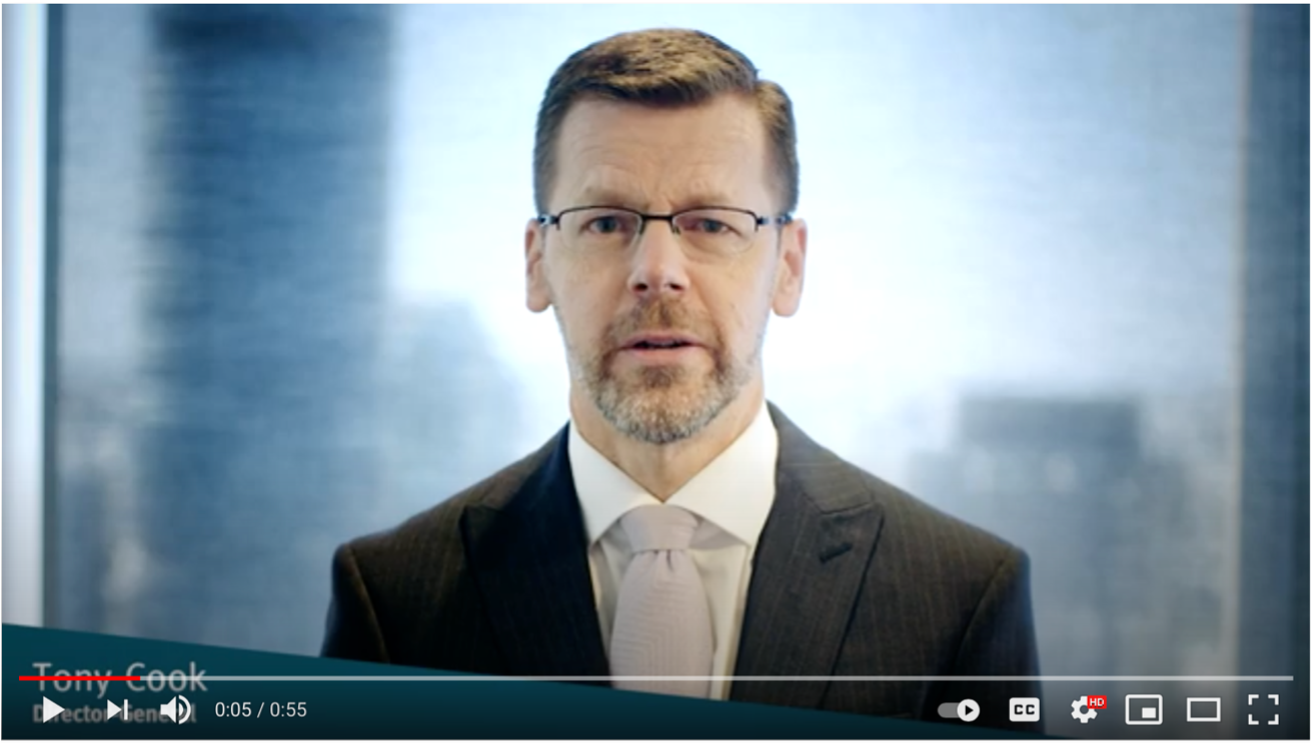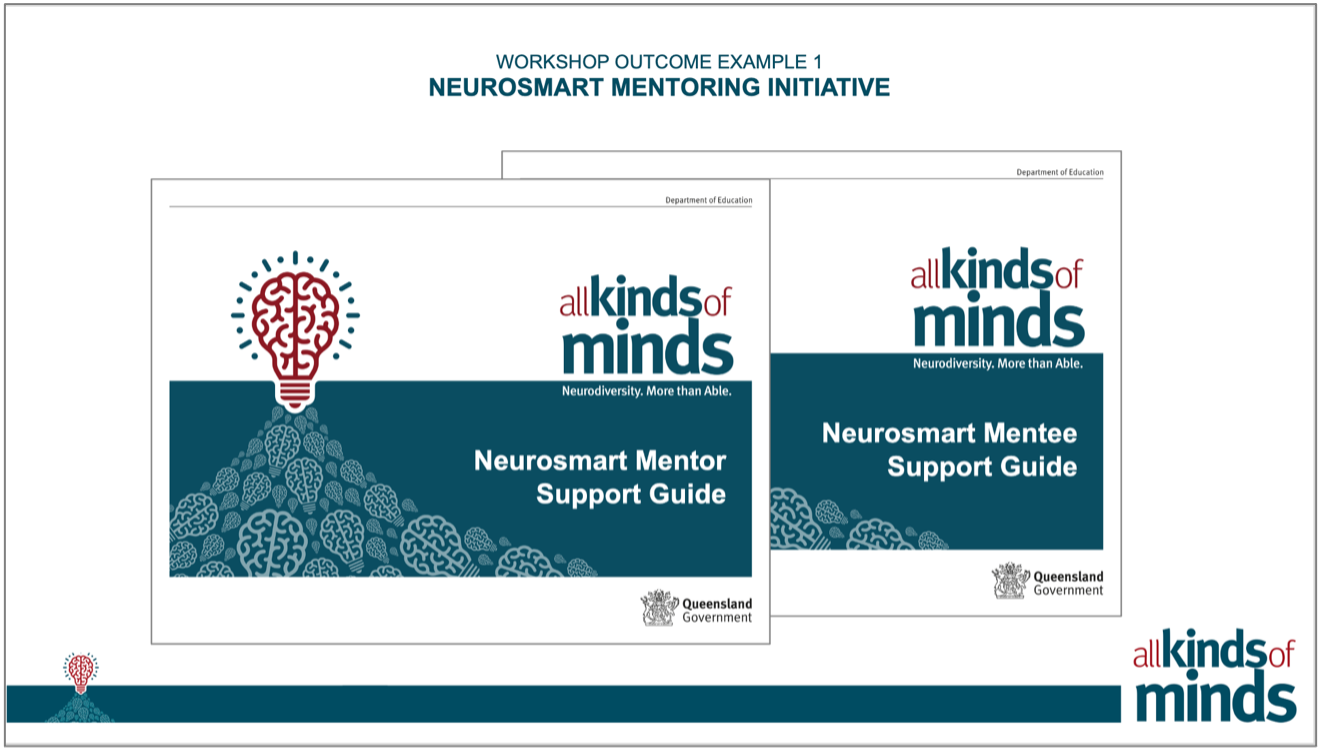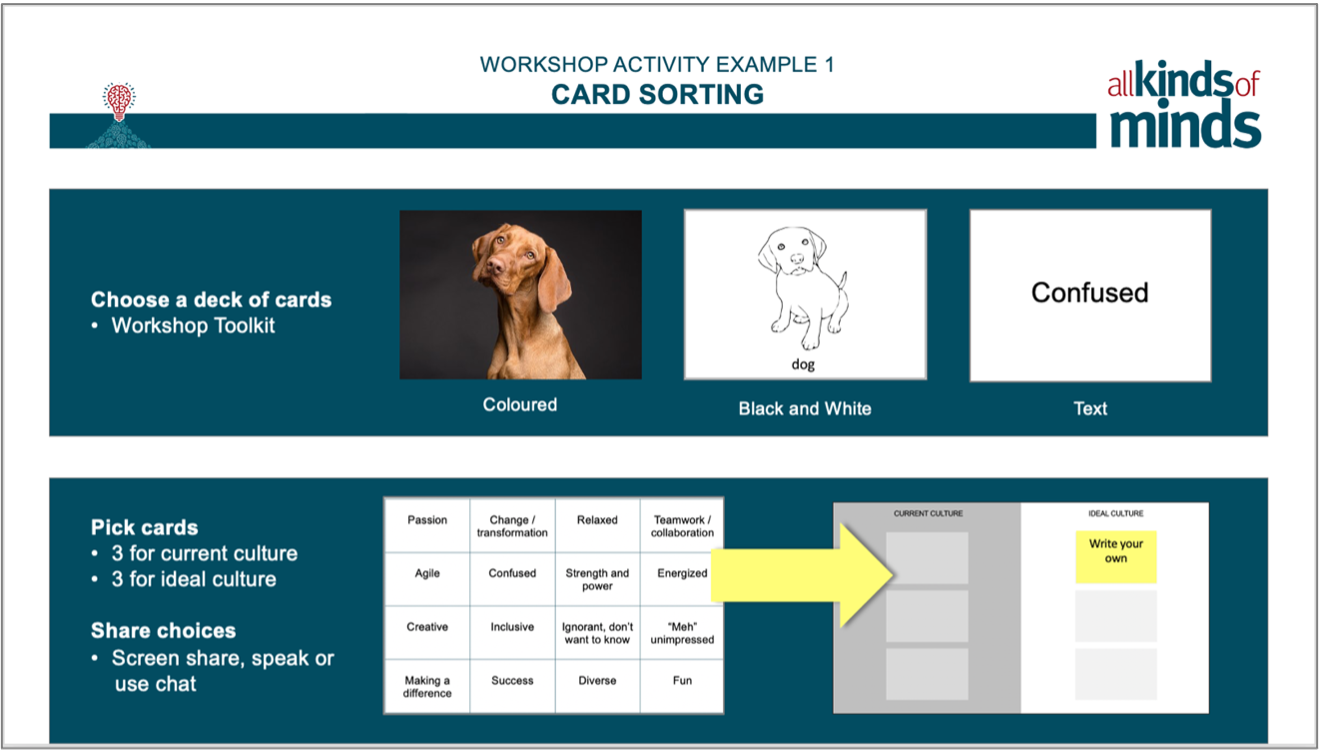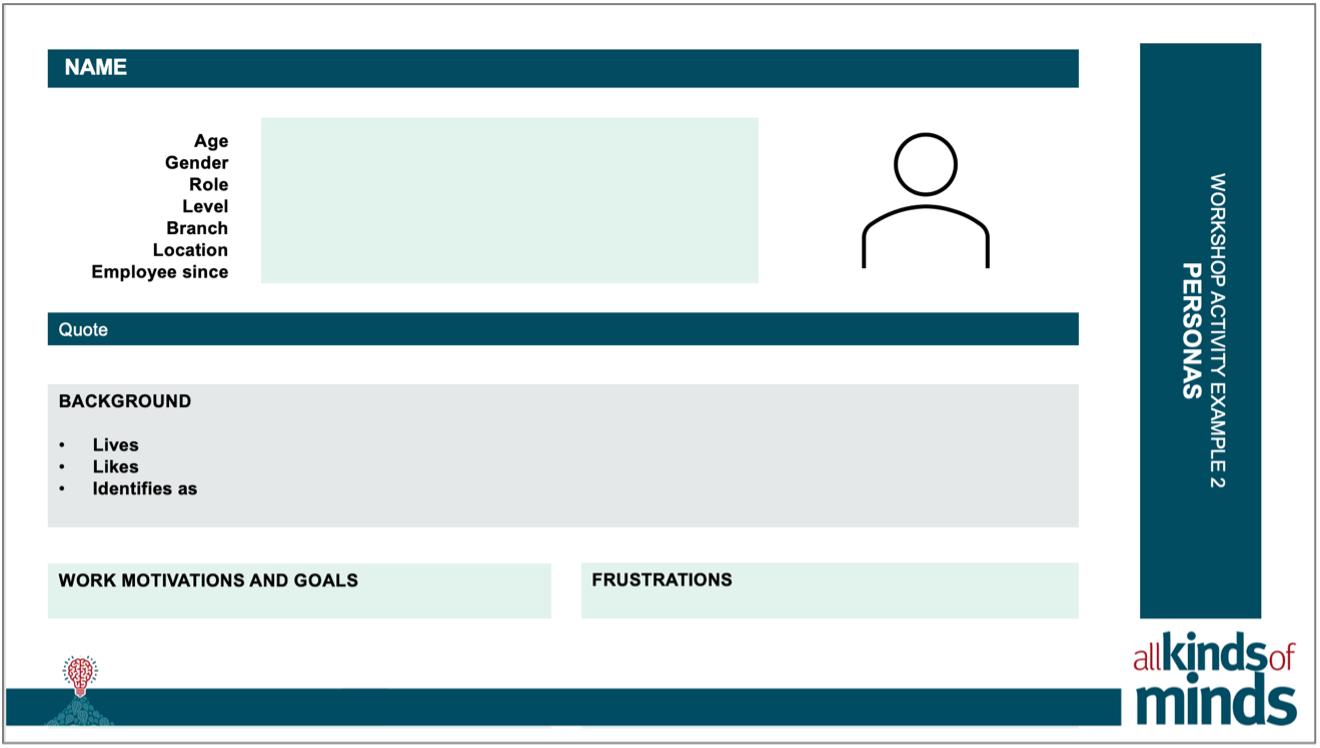Key Dates








Image Credit : Dog images from Pixabay; All other images by Queensland Department of Education

Project Overview
The All Kinds of Minds Neurodiversity Pilot centres on the workforce inclusion of neurodiversity within the Queensland Department of Education, Australia. Neurodiversity refers to the natural variation in human wiring, including autism, ADHD, dyslexia etc. In a world-first, our service focuses on developing alternative recruitment and support pathways to embrace neurodiverse talent within non-technical departmental roles and include multiple stakeholder voices in the design and implementation of service.
Stage 1 of the pilot included lifting workforce capability to create cultural change through empathy, which included a series of co-design workshops with neurodiverse employees, hiring managers and human resources partners. Using human-centred design and systems thinking methods, the service innovation resulted in the development of new, co-designed services that shift the organisational culture of neurodiversity from a medical model to a social model. Embracing a co-designed model of neurodiversity provides foundations for embedding inclusive policies, practices, systems and language that represent the values and priorities of neurodiverse employees.
Organisation
Queensland Department of Education
Team
Dr Lutza Ireland- Manager of Neurodiversity Anna Gibson- Project Manager Rebecca Smith- Project Officer
Project Brief
The project brief for the All Kinds of Minds Neurodiversity Pilot (AKOM) was
designed to encompass the following key services:
- Lift organisational capability of neurodiversity inclusion within the workforce
of 95,000+ employees
- Increase the visibility and support of neurodiversity through embedding
cultural change
- Design alternative recruitment and support pathways to attract and embrace neurodiverse talent
- Design and evaluate a human-centred recruitment and support framework for neurodiversity inclusion to identify best practices within the public sector
- Improve user experience and employee participation through facilitating end user input into the usability, accessibility and relevance of current policies, systems and procedures
Using iterative design methods grounded in human-centred design and systems thinking, the pilot included multiple end user groups at multiple design and testing phases.
Project Innovation/Need
The AKOM pilot responded to multiple stakeholder needs to support the
department’s overarching strategies around workforce inclusion and student success.
- Departmental need: Enhance departmental capabilities of innovation and productivity through harnessing the experience, skills and perspectives of diverse abilities
- Job seeker need: Improve the high unemployment rate within neurodiverse school leavers by providing rewarding and productive careers within the department that align with the unique skills and talents of neurodiversity
The pilot resulted in both process innovation and service innovation. Process innovation included the meaningful involvement of neurodiverse employees, such as hiring a neurodiverse lead designer for the pilot; and developing a series of inclusive co-design workshops with two workshops exclusively attended by neurodiverse participants.
Service innovation resulted in the development of unique, ground-breaking services of employee engagement and support for neurodiversity inclusion, such as:
- Neurosmart Mentoring Initiative: the program matches mentors and
mentees to form a supportive relationship. Neurodiverse employees
participate either as mentors or mentees; neurotypical employees
participate as mentors. All participants take part in relevant Neurosmart
Mentor or Mentee training.
- Neurosmart Microlearning Sessions: microlearning sessions are
developed around topics of interest identified through employee
engagement, such as the Neurosmart Communication Toolbox containing
six short recordings, available on demand.
- Neurodiversity @ Work Online Community: a moderated online learning
community on the intranet with curated content and discussion forum,
available for all employees
Design Challenge
The main design challenges were twofold: meaningful user engagement and integrating a novel service into existing systems and engaging end users in a meaningful way. In response to these challenges, AKOM used design thinking and systems thinking methods to design a viable, feasible and user-friendly service.
For meaningful end user engagement, AKOM used an iterative process to include multiple end user groups: neurodiverse employees, human resources personnel (HR partners, occupational health and safety, recruitment etc.) hiring managers and team members. Engagement methods included surveys, interviews, reflective practice and a series of virtual co-design workshops. AKOM used iterative methods to include multiple stakeholder groups within several design phases, with each phase incorporating previous findings. Thus, end user groups were able to understand and shape the process and progress of service design.
For feasibility, AKOM’s service innovation had to integrate with the department’s existing human resources and ICT systems. Using systems thinking and design-led innovation, the service design included both divergent and convergent thinking that resulted in the innovative use of existing systems to support our value proposition.
Future Impact
AKOM sought to understand the needs and values of multiple stakeholder groups across multiple roles, seniority levels, geographical locations and neurodiversity representation, whilst complying with COVID restrictions. The key method of engagement included a series of co-design workshops, where the creative toolkits were co-developed with multiple end user groups to increase their accessibility and usability. To improve user experience, toolkits were iterated between workshops to incorporate participant feedback.
Each co-design workshop represented different end user groups to enable a rich exploration of stakeholder perspectives without the interference of potential power dynamics across different levels of seniority. The workshop series were bookended with the neurodiverse participant groups. This positioned neurodiverse employees as the primary end users of the service and provided opportunities for their voices to meaningfully influence the course of the workshop series.
The co-design series resulted in three key outcomes. Firstly, a tested conceptual framework for the inclusive and meaningful engagement of a neurodiverse workforce, which enables key stakeholders -including neurodiverse employees- to represent their own values and priorities. Secondly, a set of design principles to improve user experience across services, systems and processes for neurodiverse employees. Thirdly, guiding principles for embedding cultural change based on a co-designed, social model of neurodiversity.
Service Design - Corporate
This award celebrates creative and innovative solution design for the successful delivery and provision of government corporate services. Consideration given to system integration, user experience, product design <p></p>
More Details

